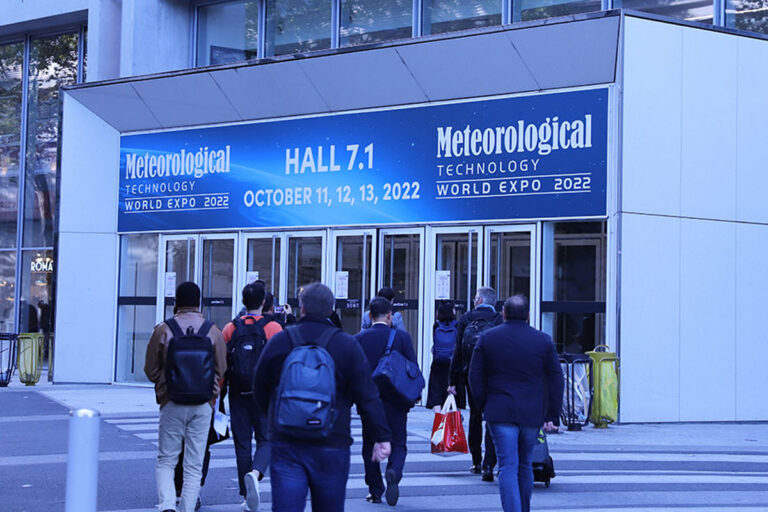As Meteorological Technology World Expo 2022 kicks off in Paris, France, we bring you news of the latest solutions and innovations impressing visitors on the show floor.
Combining the WMO TECO Conference and the SATCOM Forum with an exhibition featuring 150+ leading international technology suppliers and developers, Meteorological Technology World Expo runs until October 13 so it’s not too late to register for the industry event of the year – entry to the show and conferences (the latter on application and approval) is FREE. Register for your entry pass now!
Here’s a taster of what’s currently on display…
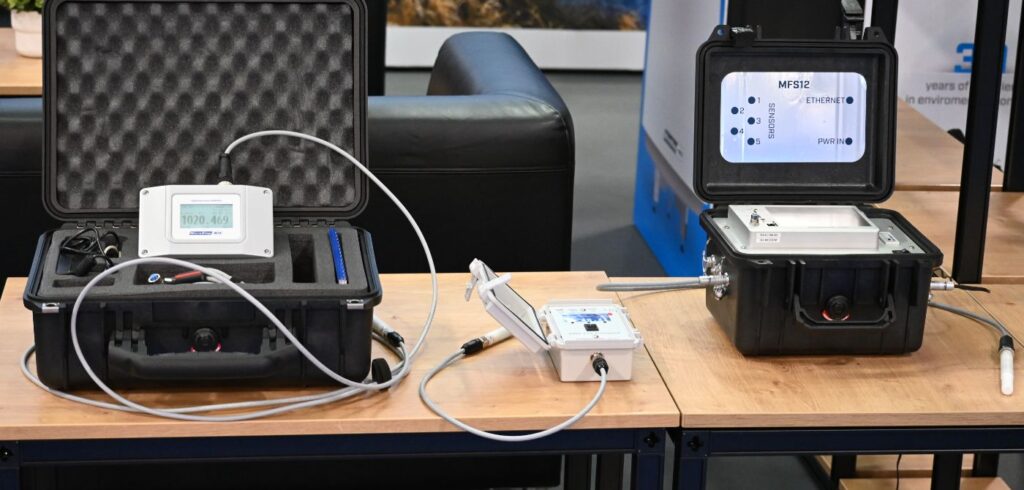 MicroStep-MIS presents latest datalogger
MicroStep-MIS presents latest datalogger
MicroStep-MIS is showcasing its latest datalogger, the AMS 111 Compact, at Meteorological Technology World Expo 2022.
The company highlights that the solution is particularly advantageous due to its compactness, cost-effectiveness and portable applications. MicroStep-MIS is also showing a host of other key solutions, including its sensor calibration software, camera-based cloud monitor, radars, dataloggers, its collection system and climatological database.
Colleagues from MicroStep-MIS’s calibration laboratory are demonstrating the process of sensor calibration using the IMS4 CalibLab. The sensor calibration software enables the calibration of a wide range of sensors using a unified and modular architecture and provides comfort, simplicity and flexibility.
The IMS4 Remote Observer is a camera-based solution for visibility and cloud coverage monitoring. It has been certified recently for use by human remote observers, and the company expects the fully automated variant to offer a high degree of automation and fill in the shortcomings of traditional methods.
The Environmental Data Management system is based on MicroStep-MIS’s Integrated Monitoring System platform. The company’s collection system and climatological database have been designed with modular architecture and the ability to integrate data from entire monitoring networks into a uniform and complex structure with a single access for the user.
Martin Gažák, managing director of MicroStep-MIS, said, “Despite the stable position we have built in the market over three decades and the huge network of partners and clients around the world, every similar event brings visitors to the booth who are looking for answers to their questions and solutions to their problems but have not heard of MicroStep-MIS yet. We always look forward to the opportunity to meet new people, hear more about their needs and open a round-table discussion to search for solutions together.
“We are very happy that Meteorological Technology World Expo is opening its gates again after a three-year Covid-19 pandemic lull. Apart from the mentioned involuntary break, we participated in the event every year. It is both a necessity and a pleasure for us. For us, the three-day event means an opportunity to meet under one roof with many of our customers, suppliers and business partners. It’s a chance to catch up, discuss ongoing projects and talk about the nature and possibilities of cooperation in the future.”
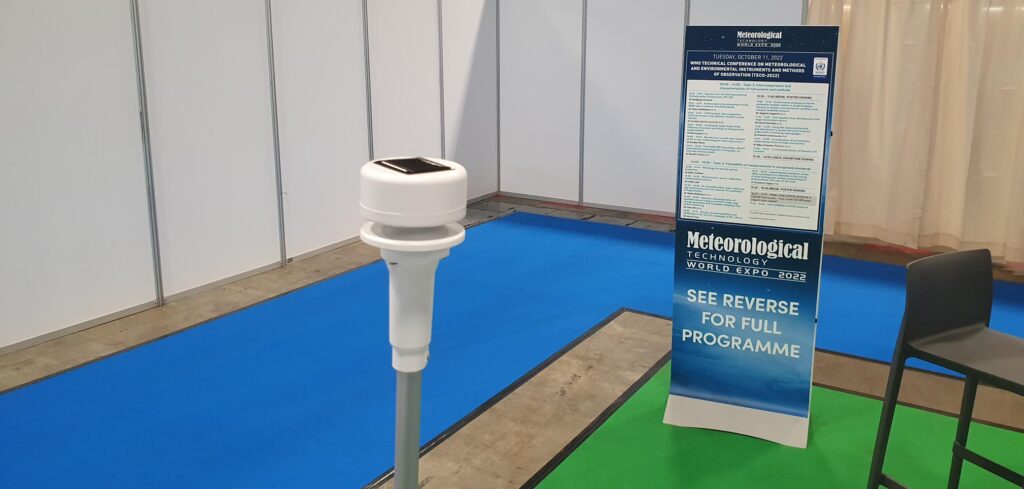 LCJ Capteurs launches Sonic-Anemo-DLG ultrasonic wind sensor
LCJ Capteurs launches Sonic-Anemo-DLG ultrasonic wind sensor
LCJ Capteurs has launched the Sonic-Anemo-DLG ultrasonic wind sensor with an integrated datalogger at the expo.
The Sonic-Anemo DLG ensures users can measure the average wind speed and direction over a given period of time. It can store data and therefore save the processing power of the connected equipment, which will be mobilized to retrieve some or all of the selected samples. The sensor is available in two versions, the first with low power consumption and the second with autonomous power. It is intended for integrators and aimed at remote weather stations.
Users can check the data collected by the sensor following different events: pollution, natural disaster and agricultural weather, and the time and date of the phenomenon can be viewed afterward. Its integrated datalogger enables the user to choose the data they want to retrieve in order to optimize their power consumption. The high-speed data transmission supports the microprocessor as well as the equipment that processes the data. Each sensor can be configured to the customer’s needs, and the time stamp, resolution and communication protocol can be adjusted. It is even possible to create sensors adapted to specific uses.
Christophe Michel, CEO of LCJ Capteurs, said, “We want to meet our French and foreign customers but also [connect with new] prospects after the Covid-19 period: participating in this trade show allows us to avoid a world tour while being more virtuous financially and ecologically!”
IACIT launches decision-making nowcasting platform
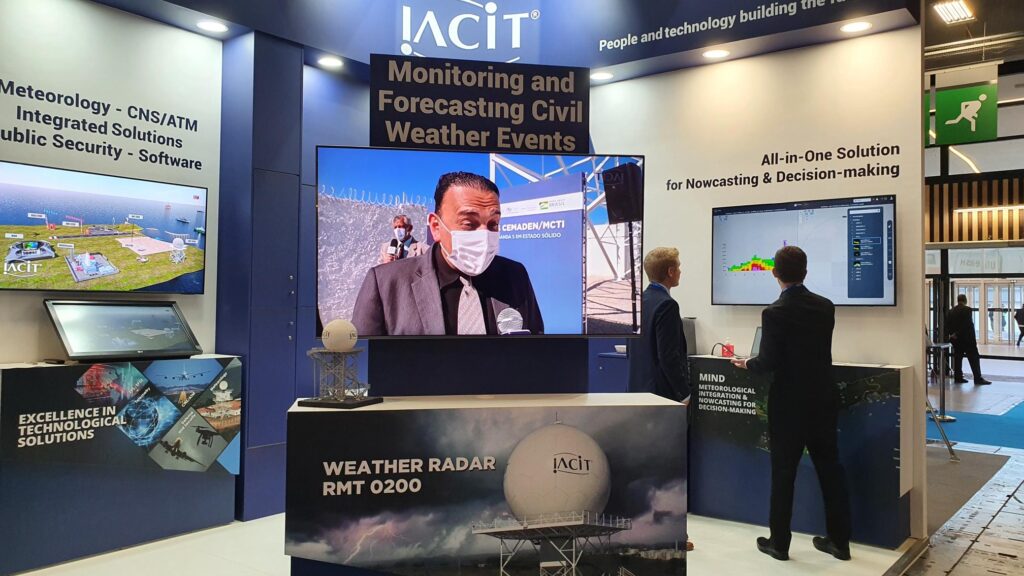 IACIT has launched its Meteorological Integrated Nowcasting for Decision-Making (MIND) platform at the expo.
IACIT has launched its Meteorological Integrated Nowcasting for Decision-Making (MIND) platform at the expo.
The MIND platform is a full-scale web-based solution for meteorological command and control (C&C) centers. It is able to integrate large data sources simultaneously and generate automated information and early warnings. The platform has been designed to provide assertive information for air traffic control, agribusiness, water resources management and natural disaster prevention. In turn, this is intended to enable users to draw a situational awareness scenario for prevention and strategic decision-making.
Alongside the nowcasting platform, IACIT is also highlighting its RMT 0200 Weather Radar at Meteorological Technology World Expo 2022. The RMT 0200 Weather Radar uses solid-state power amplifiers instead of tubes, resulting in lower energy consumption, greater durability, higher availability and less electromagnetic pollution. This enables the radar to detect meteorological phenomena at long distances. The RMT 0200 can detect atmospheric phenomena within a radius of up to 400km, thereby contributing strategic information for assertive decision-making in air traffic control, agribusiness, water resource management and natural disaster prevention.
Gustavo de Castro Hissi, director of marketing and sales at IACIT, said, “The company has continually invested in research and development of state-of-the-art products and technological solutions. Among the products developed are the RMT 0200, S-band meteorological radar, dual polarization in solid state; and the MIND, a command and control platform capable of merging data from various sources, such as radar, among others. Both solutions aim to contribute with strategic information for assertive decision making.”
MFI shares its meteorology workshop insights
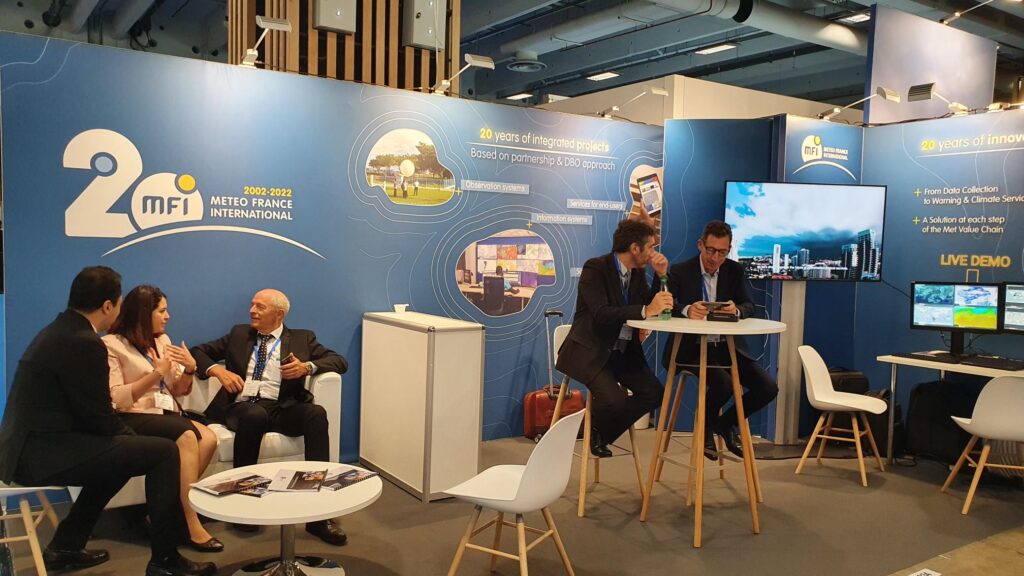 MFI is presenting the content and the recommendations produced during its high-level meteorology workshop.
MFI is presenting the content and the recommendations produced during its high-level meteorology workshop.
The workshop, held in September 2022, focused on public private engagement (PPE) and design, build, operate (DBO) initiatives in meteorology and was designed to assist national meteorological and hydrological services (NMHS) wanting to strengthen their capacities in an efficient and sustainable way. The event was attended by representatives from more than 20 countries and provided the opportunity to share experience and best practices, as well as come up with pragmatic recommendations to scale up the concept of PPE and DBO for the benefit of the whole meteorological community.
Patrick Benichou, president of MFI, said, “Come and visit us at our booth and let us present you our unique approach to efficiently strengthen national hydromet services at a time when they are most needed to take up the challenges of climate change and the multiplication of extreme weather events. Find out about PPE and DBO strategies and let us present you examples of projects we’ve successfully achieved, validating the relevancy of our innovative approach!”
Biral showcases weather detection systems
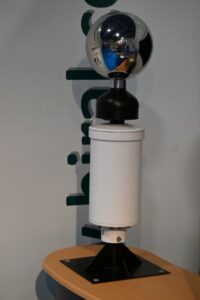 Meteorological equipment specialist Biral is exhibiting its lightning warning system BTD-200, thunderstorm detector BTD-300, visibility and present weather (VPF) VPF-730 and SWS-200 sensors.
Meteorological equipment specialist Biral is exhibiting its lightning warning system BTD-200, thunderstorm detector BTD-300, visibility and present weather (VPF) VPF-730 and SWS-200 sensors.
Biral’s BTD-200 lightning warning system is a complete detection and warning system developed from the Biral range of professional aviation-grade lightning detection systems. It detects the local presence of all forms of lightning out to a range of 35km (22 miles) from the sensor. Designed to be installed and set up by non-technical staff, it comes with a power supply and the essential PC application Lightning Works, for monitoring and warning personnel of approaching thunderstorms.
The company’s BTD-300 thunderstorm detection system uses a new technology detection system. Biral estimates that its close-range detection efficiency is approximately 200% better than lightning location network systems, providing improved warning capabilities. The system can detect all forms of lightning within an 83km radius, including warning of potential overhead lightning.
Additionally, those visiting Biral’s stand can experience the corrosion-resistant VPF range that provides visibility and present weather measurement and has been specified for many installations due to its efficiency, reliability and performance. The sensor is a compact and robust package which makes it suitable for aviation and general synoptic networks. Its long service life of approximately 15 years means it can be implemented in coastal or offshore locations where the local conditions can be severe.
The SWS-200 is also being presented at the show. This solution is designed for use in applications where accurate and reliable visibility measurements are required with the addition of WMO 4680 present weather codes. The sensor measures the meteorological optical range (MOR) and reports the presence of liquid and frozen precipitation. The unique backscatter receiver gives the SWS-200 unparalleled abilities in distinguishing frozen from liquid precipitation.
Nathan Neal, sales and marketing director at Biral, commented, “Biral has been exhibiting at the Met Tech World Expo, the world’s largest meteorological fair, for a number of years and is excited to be returning again for 2022.”
Swisens reveals brand-new real-time pollen monitoring system
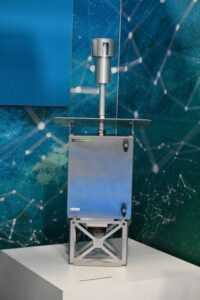 Swisens is showing its brand-new real-time pollen monitoring system SwisensPoleno Mars.
Swisens is showing its brand-new real-time pollen monitoring system SwisensPoleno Mars.
The solution monitors pollen concentrations in real time using artificial intelligence (AI) to identify different pollen types and is a fully automatic running system counting and identifying pollen in the environment.
According to Swisens’ data, pollen allergies are a growing problem and approximately 25% of adult Europeans are affected. Global warming is lengthening the flowering periods and thus the pollen season; a milder climate favors the spread of invasive allergenic plants; and stress factors such as heat and air pollution increase the concentration of allergens in pollen grains. Therefore, the pollen allergy problem will only increase in the future. By monitoring pollen – the company points out – meteorological services can create digitalized and shareable real-time forecasts.
Patrick Minder, marketing and sales manager at Swisens, said, “We are looking to meet met offices which want to move toward this new application in environmental monitoring. Our participation gives all visitors and stakeholders at our booth the opportunity to learn more about real-time pollen monitoring. With their mutual, interest, we believe to be the ideal partner for designing pollen and bioaerosol monitoring networks and delivering tailored, high-quality data to our customers.”
Finapp’s cosmic ray neutron sensing solution makes its show debut
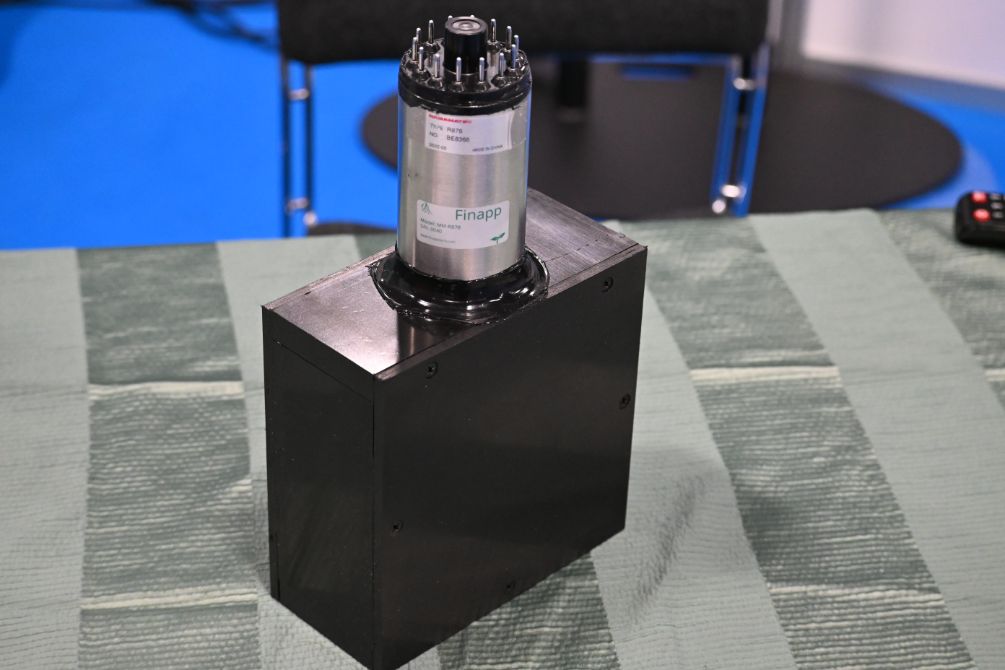 Finapp’s new cosmic ray neutron sensing (CRNS) solution has made its show debut at Meteorological Technology World Expo 2022.
Finapp’s new cosmic ray neutron sensing (CRNS) solution has made its show debut at Meteorological Technology World Expo 2022.
At the expo, the company is demonstrating the solution’s ability to measure the water content of soil, snow and biomass. As some cosmic neutrons from space are absorbed by Earth’s water and some are reflected into the air, they can indicate how much water is present in the soil, in the biomass or in the snow. Terrestrial cosmic rays form a ‘fog’ of suspended neutrons from their interaction with the water molecules present in the ground. Finapp’s solution has been designed to translate these neutrons into numbers that everyone can understand.
The new generation of Finapp CRNS can measure an area of approximately 5-10ha. The solution can measure up to 50cm in dry soil. Additionally, it does not require a flat terrain.
It provides real-time measurements due to the nature of its cosmic rays. Its measurement abilities are not limited to a single point, so it is not tied to all the errors that this can bring. Instead, it gives insight into the area’s real water content situation. The probe is plug-and-play, and, with the panel, it also works off the network.
The CRNS solution does not require heating or antifreeze fluids. Furthermore, no local maintenance is required, as the instrument has been designed to be self-calibrating, and it is lightweight to ensure easy transportation and installation. It is capable of measuring through complex snow layers, both surface and deep snow. The sensor is compatible with all dataloggers and can also provide data on a proprietary cloud application.
Carlo Mei, business development manager of Finapp, said, “We hope to meet professionals from the environmental control areas and meteorological systems integrators, and also international environmental institutions (agriculture, food, environmental, etc) to provide them with an easy and effective solution that meets some of the current needs in the hydrogeological, water resources and agricultural field fields.”


